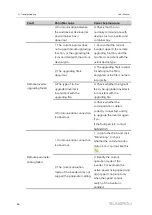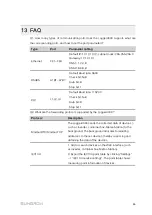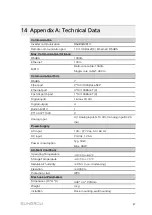
72
power compensation, the inverter keeps operating in the reactive-forbidden output
state, and the Reactive control mode is set to "Disable".
step 1
Click "Power control" -> "Reactive power" to enter the reactive power interface.
step 2
Set the reactive control mode to "Disable" and click “Save”.
-- -- E
En
nd
d
10.2.2.2 Remote Power Control
When the instruction source is IEC104 or MODBUS TCP protocol, set the "Reactive
control mode" to "Remote power control".
step 1
Click "Power Control" -> "Reactive Power" to enter the reactive power interface.
step 2
Set the "Reactive Control Mode" to "Remote Power Control".
step 3
Set remote dispatching parameters. For specific parameter description, refer to the
following table.
P
Pa
arra
am
me
ette
err
D
De
essc
crriip
pttiio
on
n
Control method
Open loop control: Remote monitoring background is
connected and active instruction of remote dispatching is
sent to the power output port of the inverter, thereby
achieving active power control.
Closed-loop control: Remote monitoring background is
connected and reactive instruction of remote dispatching
is used as target value, reactive power and power factor
of the meter need to be collected and used as input
parameters, and reactive power compensation ratio is
calculated and sent to power output port of the inverter.
Generally, this strategy is used for improving the power
factor of the property boundary point.
Query recovery time*
The Logger4000 receives the remote scheduling
command and will stop querying data during this time
period.
After the remote scheduling command is executed, you
can continue to query the data.
Frame delay*
The delay time of the message after the logger sends the
scheduling command.
Select energy meter /
transformer**
Select Smart Energy Meter / transformer involved in
power regulation
Communication
abnormality output (%)**
Communication is abnormal, and specified dispatch
output value is delivered.
User Manual
















































